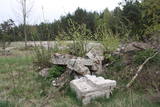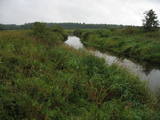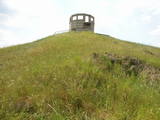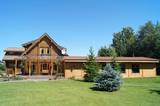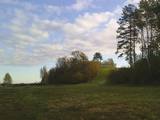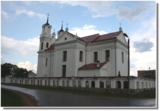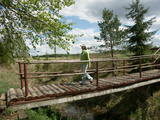| Nr | Nosaukums | Apraksts |
|---|---|---|
|
Armijas degvielas noliktavas bija daļa no Papē izvietoto militāro objektu kompleksa. Degvielas cisternas no šīs vietas ir izvāktas un vairs nepastāv. |
||
|
Latvijas lielākā parastā liepa (Tilia cordata). Daļa no varenajiem žuburiem ir atbalstīti. Stumbrā lieli dobumi, kas aizklāti, lai novērstu ūdens iekļūšanu un ātrāku trupēšanas procesu. Tāpat kā daudzi citi šāda izmēra koki – sena svētvieta.
|
||
|
„Smiltenes piens” lepojas ar vairāk kā 100 gadus ilgu vēsturi. Šobrīd uzņēmums ir trešais lielākais siera ražotājs un sestais lielākais piena pārstrādes uzņēmums Latvijā. Sadarbojas ar ~ 150 kvalitatīva Latvijas piena piegādātājiem. „Smiltenes piens” ir vienīgais, kur ražo „Latvijas sieru”. Uzņēmuma produkti ieguvuši „Zaļo karotīti”. Produkciju eksportē uz 5 pasaules valstīm. Produktus var iegādāties „Smiltenes piena” veikalā Smiltenē, kas atrodas netālu no uzņēmuma. |
||
|
Restorāns un bārs "Hot Potato" atrodas viduslaiku koka ēkas garajā pagrabā Liepājas vecpilsētā. Velvētie griesti pagrabam piešķir senatnīgu gaisotni. Restorānā tiek pasniegti starptautiski ēdieni. Uz skatuves ik pa laikam uzstājas vietējie mākslinieki. |
||
|
Palieņu pļavas starp Rūjienu un Rūjas ieteku Burtnieku ezerā, kurām raksturīga liela augu un putnu sugu daudzveidība. Tās robežojas ar bijušiem Rūjas zivju dīķiem, kas šobrīd aizaug ar mežu. Rūjas palienes var vērot gan braucot ar laivu pa Rūju, gan arī no ceļa, kas ved uz minētajiem dīķiem. Tur izvietots informācijas stends.
|
||
|
Restorāns "Marijas kafija" atrodas Rēzeknes centrā blakus Rēzeknes augstskolai, un iekārtota ēkā ar velvētiem pagrabiem. Latviešu virtuve: aukstā zupa, plānās un kartupeļu pankūkas, cūkgaļas cepetis, cūkas ribiņas, teļa gaļas kotletes, jēra gaļas sautējums, cepta menca vai forele. Īpašais ēdiens: kazas siera salāti. |
||
|
Parks atrodas Karulas augstienes paugurainajā apvidū, kura vidusdaļā iegūlis Ähijärve ezers. Parks veidots kultūrvides, ainavas ar nelielām lauku sētām un savdabīgo kupolveidīgo pauguru aizsardzībai.
|
||
|
The trip starts in Kuldīga – a jewel among the old towns in Kurzeme. The town centre is home to historic buildings dating back to the 17th – 19th century. Cobbled streets of Kuldīga, old buildings, the river Alekšupīte, running through the town, St. Catherine’s Church and organ music concerts in it, gourmet restaurants and a country delicatessen shop in the town centre is a great travel experience to enjoy in a leisurely ambience of a small town. The red-brick bridge over the river Venta is a landmark of the town. The widest waterfall of Europe, Ventas rumba (width ~100 m) lies on the Venta. Venta river promenade is a popular place for walking along the riverbank. A private transfer will take you from Kuldīga to the village of Snēpele, where you will start your hike. The trail will take you to the Pelči Manor, the manor park and the deer park next to the guest house “Mazsālijas”. Next, the Forest Trail will lead you through the Abava River Valley Nature Park up to the town of Sabile. The latter is home to a winery and cider house “Sabiles Sidra nams”, which offers tastings and sells the local wine and cider. The section along the Abava River Valley Nature Park is the most diverse in terms of landscape and terrain of a river valley in Kurzeme. The river valley with its numerous habitats and vast biodiversity reaches a depth of 30–40 m and is more than 300 m wide. One will find springs, waterfalls, rock outcrops, and boulders here. After the Forest Trail has meandered through meadows, oak forests and hillocks it finally reaches the town of Kandava. |
||
|
Savā ziņā unikālo vairāk kā 24 400 ha lielo teritoriju padomju armija izmantoja kā kara aviācijas mācību mērķu poligonu. Poligona vēsture iesākās ar 1951. g. un, lai nodrošinātu teritorijas izmantošanu šādam mērķim - tajā likvidēja četrus kolhozus, slēdza ceļus, pārvietoja vairākus simtus zemnieku saimniecības un viensētas. Civilo personu kustību Zvārdes poligonā daļēji atjaunoja tikai 1993. g., kad izbūvēja vairākus jaunus ceļus. Ja gribas iegūt visaptverošāku skatu un bijušā poligona mežu masīviem, jākāpj t.s. „Virsnieku kurgāna” – mākslīgi veidotā augstā paugurā, no kura armijas maneverus koordinēja komandieri. Nav ieteicams doties „bezceļu pārgājienos!
|
||
|
Viesu nams atrodas vien 200 metru attālumā no Vidzemes jūrmalas. Tajā tiek piedāvātas nakšņošanas iespējas gan istabiņās, gan guļbūves namiņos, gan kempinga tipa mājiņās. Tāpat pieejamas telšu un ugunskura vietas, kā arī tenisa korts, pirts un āra kubls. Iespējams rīkot dažādus svētkus līdz 100 personām, tiek nodrošināta arī ēdināšana pēc iepriekšējas vienošanās. Netālu no viesu nama atrodas vasaras kafejnīca, kā arī divas lielas autostāvvietas. |
||
|
Īdeņas pilskalns atrodas Lubāna ezera ziemeļrietumu stāvajā nogāzē
pret Lubāna ezeru, zemes izvirzījumā starp nelielām graviņām. No tā
paveras lielisks skats uz ezeru un klāniem. Ir bijis apdzīvots no 11. gadsimta.
|
||
|
Cirma ezera rietumu krastā slejas 1830. g. no laukakmeņiem būvētā baznīca. Tā ir slavena ar Jaunavas Marijas gleznu, kam piedēvē brīnumdarītājas spējas. Šī iemesla dēļ dievnams ir populārs svētceļnieku galamērķis. |
||
|
Tūrisma gide Ineta Jansone piedāvā ekskursijas grupām gar Kaņiera ezeru, iepazīstinot ar putniem, kuri mīt tā tuvumā. Kaņiera ezers ir vieta, kur migrācijas laikā apmetas daudzi tūkstoši ūdensputnu. Ezerā un tā apkārtnē sastopamas vairāk nekā 200 putnu sugu. Putnu vērotāju ērtībām vienā no Kaņiera ezera pussalām uzcelts putnu vērošanas tornis. Netālu no putnu vērošanas torņa izveidota koka laipa uz pontoniem, kura stiepjas cauri niedrāju audzei. Kaņiera ezers izceļas ar lielu daudzums zivju – tajā konstatētas gandrīz 20 zivju sugu. Izsens zvejnieku ciems - Lapmežciems atrodas skaistā vietā uz šauras zemes strēles starp Kaņiera ezeru un Rīgas jūras līci. Lapmežciemā izveidots zvejnieku muzejs, kuru var apmeklēt ekskursijas laikā, kā arī nobaudīt svaigi kūpinātas zivis. |
||
|
Vecākais un lielākais Lietuvas kūrorts (no 1794. g.). Mikroklimats (apkaimes mežu gaiss), sāli saturoši avoti, dūņas. Vecpilsēta – pilsētbūvniecības piemineklis. |
||
|
Viens no populārākajiem Latvijas smilšakmens atsegumiem, kas pazīstams ar savu neierasti gludo un skaņu atstarojošo klints sienu (ap 12 m augsta). Salacas labajā krastā iekārtota apmetnes vieta, kur var veikt eksperimentu - nostāties dažādās vietas iepretim atsegumam un runāt pusbalsī. Atstarojošo balsi varēs dzirdēt vai nu pats runātājs, vai citās vietās esošie. Atrodas Salacas ielejas dabas parka un Skaņākalna parka teritorijā, Ziemeļvidzemes biosfēras rezervātā. Skaņākalna dabas parku caurauž blīvs taku tīkls |
||
|
Atrodas nelielās Dvietes centrā. Tās baltais stāvs ir redzams jau pa lielāku gabalu. Pirmo koka baznīcu šeit cēla 1775. g. vietējās muižas īpašnieka grāfa J. K. Višlinga vadībā. Pēcāk dievnamu nojauca un pārveda uz Zarinku kapiem. Mūsdienās redzamās Dvietes katoļu baznīcas (neobaroka stilā) ar diviem torņiem celtniecību 1864. g. īstenoja ar grāfa Kazimira Plātera - Zīberga dotā finansējuma palīdzību. Dievnamu sagrāva 1. pasaules kara laikā, tāpēc līdz tā atjaunošanai un iesvētīšanai 1929. g. kā lūgšanu telpu izmantoja Dvietes muižas magazīnas klēti (divslīpņu jums), kas atrodas Dvietes – Bebrenes ceļa malā un tagad ir atjaunota. 1940. g. apkārt baznīcai uzcēla mūra žogu ar kārniņu jumtu, bet 20. gs. 70. gados uzbūvēja draudzes māju. Dievnamā ir īpaši grezns sakrālā baroka interjers, ko uzskata par krāšņāko bijušajā Daugavpils rajonā.
|
||
|
10 km garais pārgājienu maršruts iepazīstina ar vienu no vēl retajiem, cilvēka mazāk ietekmētajiem Daugavas senlejas posmiem. Tā sākums – Aizkraukle, finišs – Skrīveri. Gar upes krastu izvietotas atpūtas vietas. Maršrutu var braukt arī ar velosipēdu. |
||
|
Braucot cauri Kaives ciemam, var pievērst uzmanību Kaives muižas „atliekām”. Vietas vēsture ir sena, jo jau 1440. gadā Livonijas ordeņa mestrs piešķīra šeit īpašumu Johanam Kaivenam. Kungu māja gāja bojā 1905. gadā, bet pārvaldnieka ēku nopostīja 2. pasaules kara laikā. 1956. g. nodega kalte, bet pirms trijām desmitgadēm - muižas krogs. Līdz mūsdienām palikusi tikai 1861. gadā celtā magazīna (sarkana ķieģeļu ēka) pakalnā un tai blakus esošais parks, kurā izveidots neliels skulptūru dārzs, estrāde un atpūtas vieta. |
||
|
Pēc izmēriem neliela, ar mežiem klāta teritorija, kurā izplūst sēravoti. Populārākais no tiem – Ellītes sēravots satur mazmineralizētu sērūdeni, kam piedēvē dziedznieciskas īpašības. Sēravota apkārtne ir labiekārtota un to atrast palīdzēs taka un informācijas stends. Avotu uzskata par Iecavas izteku. Dabas liegums veidots ar sēravotiem saistīto biotopu un aizsargājamu augu sugu saglabāšanai.
|
||
|
Tornis atrodas Dundagas – Mazirbes ceļa malā, Šlīteres Zilo kalnu nogāzes augšdaļā. No tā paveras jauks skats uz piejūras zemienes mežiem, ceļu un nelielu Baltijas ledus ezera senkrasta posmu.
|
||
